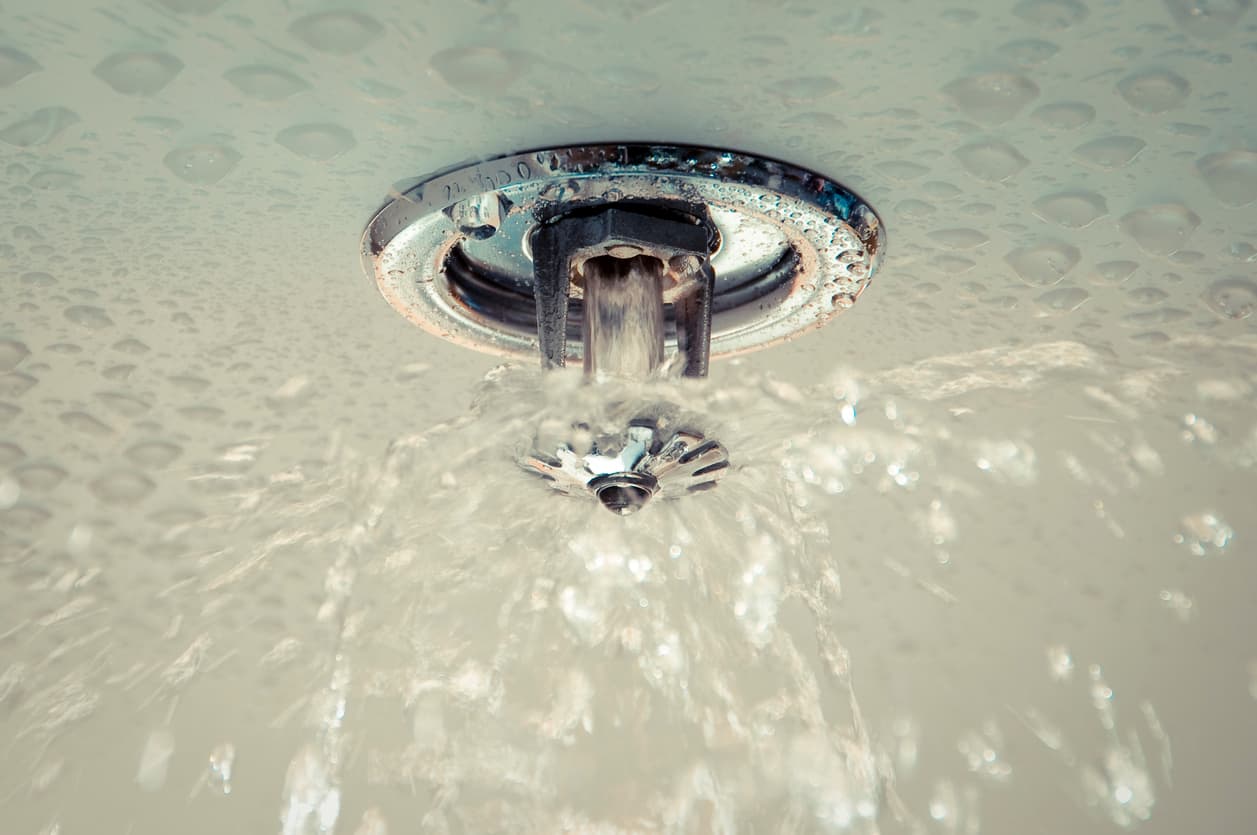Everybody relies on fire and life safety systems daily, including one of its best known tools - a fire sprinkler. Many of us walk past these devices every day, but few understand exactly how they function. What’s more, a lot of the assumptions associated with fire sprinklers are in fact misconceptions.
So, how do fire sprinkler systems work? Understanding the basics of sprinklers will allow building owners and managers, plus health and safety specialists to leverage the system and maintain superior fire and life safety for their organization.How are Fire Sprinklers Activated?
Contrary to popular misconceptions, automatic sprinklers are not activated by smoke. Sprinklers contain a heat sensitive element to trigger activation. In typical modern units, this is commonly a glycerine-based liquid in a glass bulb. This element is perfectly calibrated so that it will shatter at a specific temperature - usually between 135 and 165 degrees Fahrenheit. This element is unique to each sprinkler, meaning that not all sprinklers in a system need to be activated at the same time.
Another commonly held false belief about sprinklers is that they will create serious water damage in place of fire damage. Sprinklers activate in the specific area that they detect the rising heat from a fire. This means very little water damage occurs because of how quickly sprinklers can deploy. Sprinklers can also minimize water damage, as they cover a larger area with less than 20% the water that would be needed by a fire hose in the same situation.
Where is the Water in a Fire Sprinkler System Stored?
There are different types of sprinkler systems, but the main distinction between styles is whether they function using a wet pipe system or dry pipe system.
Wet Pipe Systems
Wet pipe systems are straightforward and effective systems. These sprinkler systems store pressurized water in pipes between sprinkler heads, ready to deploy when heat is detected. These systems are very common and can be easy to maintain relative to more complex designs. Water is pressurized at the sprinkler head, so it is impossible for other systems to compete with the speed at which a wet pipe system can act to douse a fire.
While wet pipe systems can be more affordable and accessible, they can be risky if not properly maintained to prevent leaking and potential flooding. Another consideration is that these systems are not recommended in a region where there is a possibility of the pipes freezing.
Dry Pipe Systems
Dry pipe systems fill pipes between sprinkler heads with pressurized gas, keeping water in a reservoir. Once a sprinkler head activates in response to a fire, the gas escapes the system and water floods the pipes and douses the fire.
Due to extreme pressure, dry pipe systems only react on a slight delay compared to wet pipe systems. A water reservoir offers many advantages however, such as protecting environments in cold climates, and lessening the risk of flooding and accidental discharge.
Both types of systems can have numerous variations. This enables customization based on your needs for specific fire safety circumstances and to mitigate specific risks.
Keeping Fire Sprinkler Systems Well Maintained
Your fire sprinkler system is there for safety. With a tool designed to prevent the spread of fire and save lives, it needs to be dependable. Properly maintaining a fire sprinkler system is essential to ensure that it operates perfectly when it’s needed.
Maintenance Schedule
Some inspection and routine maintenance tasks will need to be done weekly or monthly to ensure peak operating efficiency, while more in depth infrastructure should be checked annually. Every five years, a system should be thoroughly inspected in extreme detail, and any necessary preventative maintenance taken. These inspections should be conducted by a fire and life safety company to ensure everything is in working order and up to code.
Testing Schedule
According to the NFPA, regular testing must be performed on sprinkler systems to ensure functionality. While legal requirements for testing can vary based on locality, a rigorous testing schedule should be followed regardless of legal obligations. Only by testing a system can it be ensured that it can be relied on during an emergency.
Dig Deeper
Detailed Maintenance and Inspection Schedules
Looking for additional information on maintenance and inspection schedules? Learn More →
Utilizing Fire Sprinkler Systems for Reliable Protection for Your Environment
Understanding how fire sprinkler systems work is an important step to improving fire safety. Knowing the correct solutions for your specific situation and how to care for your system is key to ensuring proper functionality when it's needed. Partnering with a fire and life safety protection expert to properly design, install, maintain, and repair your fire sprinkler system will provide the best protection in case of a fire emergency.







